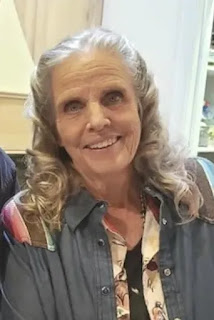 |
| Click on cover to purchase on Amazon |
PART 1: Tolkien and Middle Earth
Gas, matter, and energy erupt and expand at an amazing rate of speed, sending seeds of discovery and growth to every
corner of your sci-fi/fantasy galaxy. And all it takes is a spark of imagination to get it started. Maybe it even arises with a
simple question: Where do I even begin?
Creative minds need a trigger—perhaps a title, an idea of a character, even a simple theme or emotion. Whatever
your stimulus, you will certainly need to create a viable world in some capacity. Whether that world is a subdued, Tolkien�like secondary world or a hyper-real world like Neil Gaiman’s, your story and characters will need a cosmos of their own
to explore. The size and scope of that universe is entirely in your hands. My role is to hand you the scales needed to balance
the mind-staggering amount of effort needed to build a galaxy of your own, to provide contrasts between smaller worlds
and bigger ones, and to illustrate how knowing the difference will save you a lot of work. To that end, I offer this 3-Part
examination of different techniques for world-building.
J.R.R. Tolkien’s original unbridled vision of Middle Earth is the main focus of Part 1. It is also the most copied
example of world-building. People have dived into the technique of Tolkien’s craft so often that it’s used as a ruler when
measuring other worlds. Robert Jordan, Terry Brook, and even R.R. Martin have taken to copying aspects of Tolkien’s
fantasy world-building.
The world of Middle Earth began with a hole in the ground, out of which grew the race of small, fur-footed creatures
that would carry the entire narrative of the story. The Hobbit, the first of four novels in the Lord of the Rings series, was
published by Allen & Unwin in 1937; the remaining titles followed nearly twenty years later. With millions of Tolkien’s
books in circulation for eight decades, it’s rare to come across anyone who doesn’t know the story of the Hobbits and their
quest to end the dark lord Sauron’s reign of terror.
“I now wanted to try my hand at writing a stupendously long narrative,” said Tolkien, “and to see whether I had
sufficient art coming or material to make a really long novel which would hold the average reader right through.”
With a plan set up and basic guidelines for his world and how its inhabitants would interact, Tolkien set about
making up the history that would later define and govern the race and the daily lives of those in Middle Earth. However,
there are a few missing pieces to the puzzle in the Lord of the Rings series. Absent are religions, beliefs, and historical
temples that would increase the size of the mythology into other levels of existence. Within the original Tolkien stories,
there are no direct correlations to the greater cosmos outside of Middle Earth. Reading through the series, the reader is led
along the narrative in a closed view of the world and its inhabitants; and, while the world they do interact with is detailed
and complex, the story is limited to small sections of Middle Earth. There is a limited scope to the world around the Hobbits,
Elves, Dwarves, and men as the reader travels along the path of adventure. They are tightly packed within their own borders
with only minor hints of outside lands such as Valinor, the retirement home of the Elves. As readers, we are never really
treated to it and are kept at arm’s length.
The original trilogy also does this with other cultures within Middle Earth. For example, we are never brought to
the lands of the Harad, or told much about them outside Tolkien’s narrative: “Tis said that there were dealings of old between
Gondor and the kingdoms of the Harad in the Far South; though there was never friendship. In those days our bounds were
away south beyond the mouths of Anduin; and Umbar, the nearest of their realms, acknowledged our sway. But that is long
since.” (Lord of the Rings: The Two Towers, Book 4, Ch. 3 – “The Black Gate is Closed”).
(Lord of the Rings: The Two Towers, Book 4, Ch. 3 – “The Black Gate is Closed”)
Historical information is tightly packed into a few lines of dialogue about the Far South and its history. In these
instances, the mythology of the world and the cosmos outside only exist to serve the narrative. The world never seems much
bigger than what Tolkien wants it to be at any given time. The cosmology is boiled down to character focus, and it becomes
an emotional journey. C.S. Lewis, a good friend of Tolkien, once commented on the storytelling aspect of his companion:
“The Hobbit is merely an adaption to children of part of a huge private mythology of a most serious kind: the whole cosmic
struggle as he sees it but mediated through an imaginary world.” (p. 630, The Collected Letters, Volume II, HarperOne).
This streamlined aspect to Tolkien’s world-building works for his narrative. As a reader, however, I never get the
full breadth of the world. There is history but, despite the colorful descriptions, it never seems to go beyond the current
scene or setting. We’re given information that the world is old, based on those living there now—Elves, Gandolf, Tom
Bombadil are all aged, wise, and completely timeless
And that’s when things start to become a bit weird. If we stop and study the time frames and history within The
Hobbit and the Lord of the Rings series, we find time and the greater cosmos take a back seat to the story and adventure.
When asked about time in a 1964 BBC interview, Tolkien pointed out that he couldn’t associate the time on Middle Earth
with time as we know it “because it had been impossible. Because you would completely interfere with and trammel one in
a free invention of history and an incident of one story.”
Tolkien went on to explain that he did not want to use Earth time, nor would Earth’s land masses make sense; he
wanted his world to be free of the constraints of pre-conceived history. Time and space are fed to us in small, nutrient-packed bites that fill out the narrative with lively background for the characters to live in and interact with: “The Hunter’s
Moon waxed round in the night sky and put to flight all the lesser stars. But low in the South one star shone red. Every
night, as the Moon waned again, it shone brighter and brighter.” (Fellowship of the Ring)
This works for Tolkien’s stories and the way they flow. Keep in mind this densely packed world-building is not a
bad thing—there’s a reason Tolkien is so often copied and studied.
The question of where to start when developing a focused world becomes much easier when you’re concerned with
the characters, instead of the greater cosmos around them. By developing the characters and their world as you travel along,
you can explore it with them, learning new things as conflict arise, like orcs from the mist.

Beginning at the age of ten, Arizona native Daniel Dickinson has spent a lifetime
inventing realistic realms for his fictional characters. His fantasy world, Xonthian—
created during his teen years—is an entire domain that allows his characters’ journeys
to unfold in a diverse setting. He enjoys giving educational presentations about world building and fantasy genres, in general. Daniel’s published works include the short
story, Escape from Ogre Island; a two-story horror book, Don’t Close Your Eyes: Two
Thrilling Tales of Terror; Aggression Factor; and Gathering Tide. More about Daniel
at
https://www.tigerforce.net/ and
https://shoutoutarizona.com/meet-daniel-dickinson-author/













































